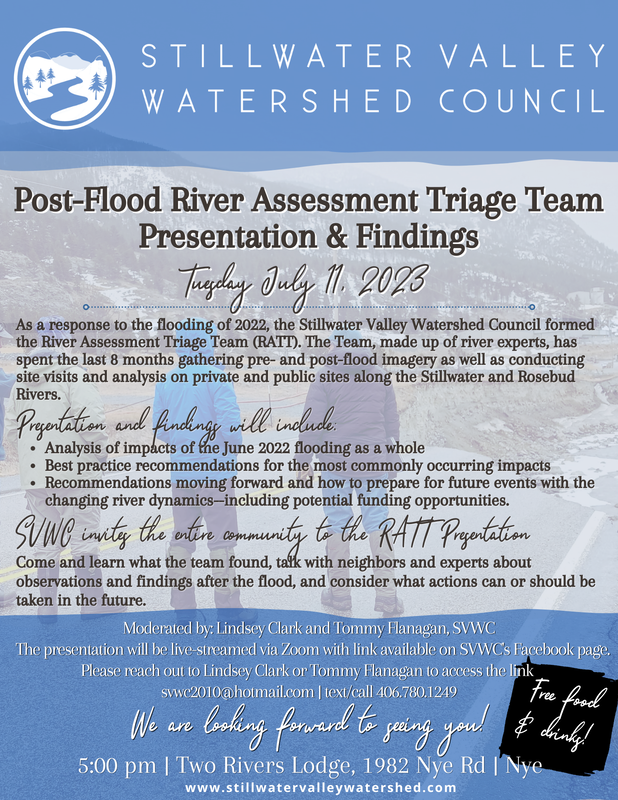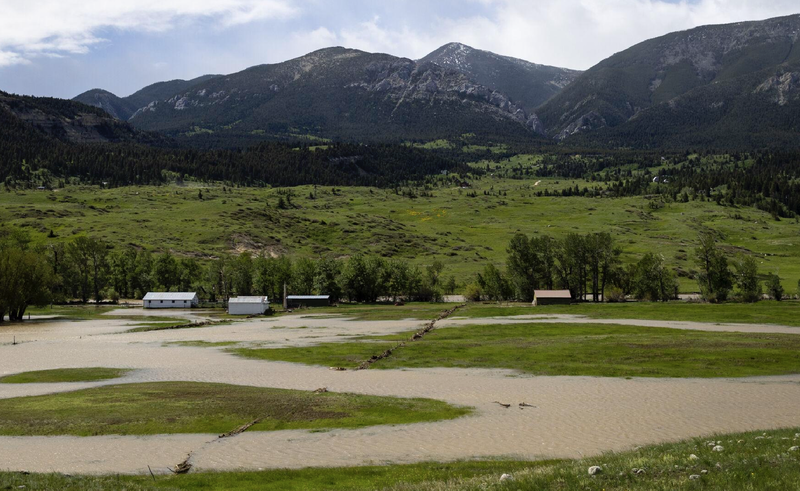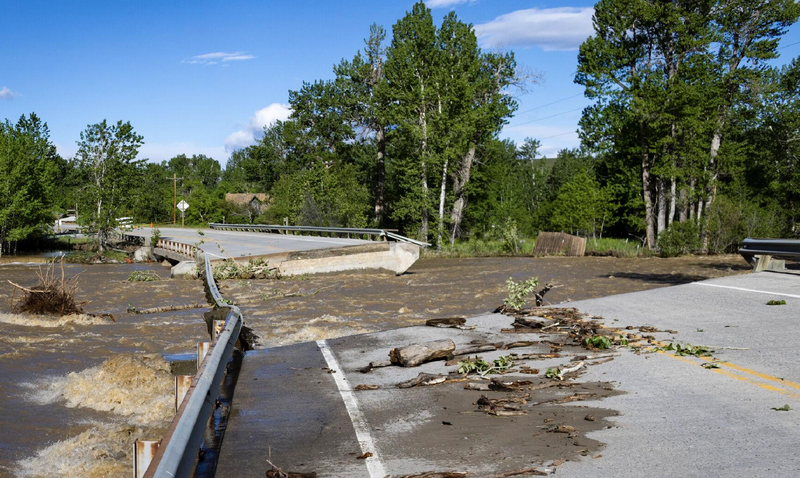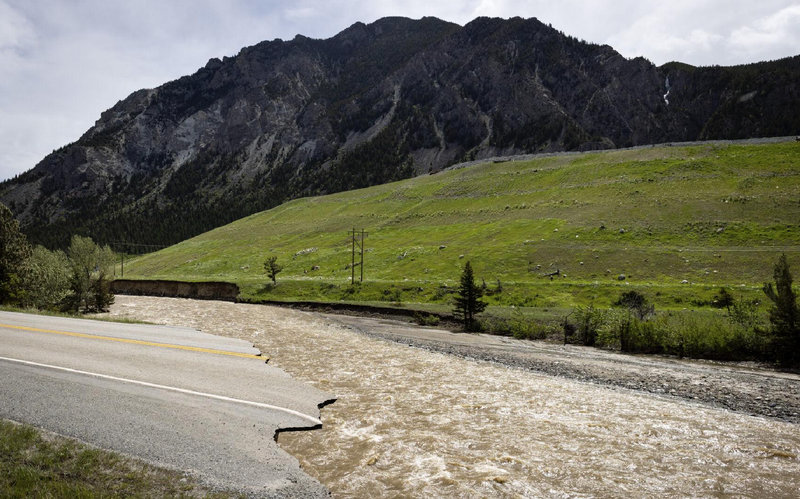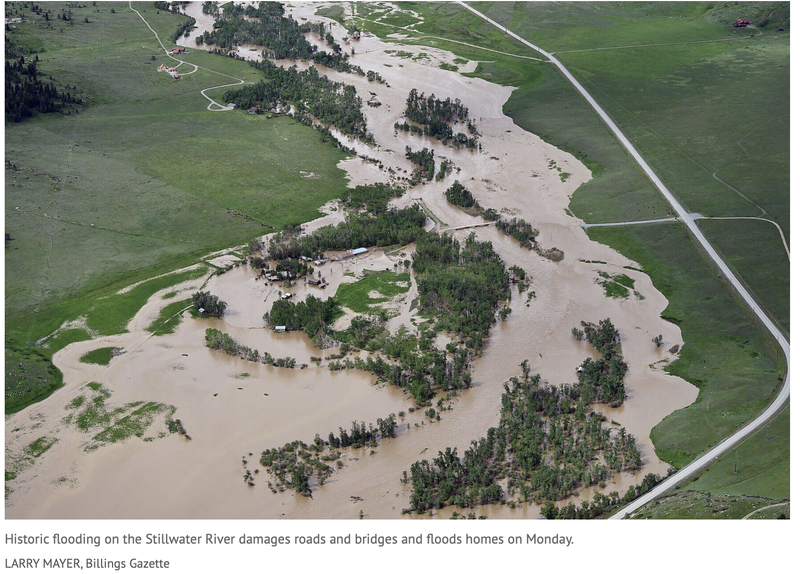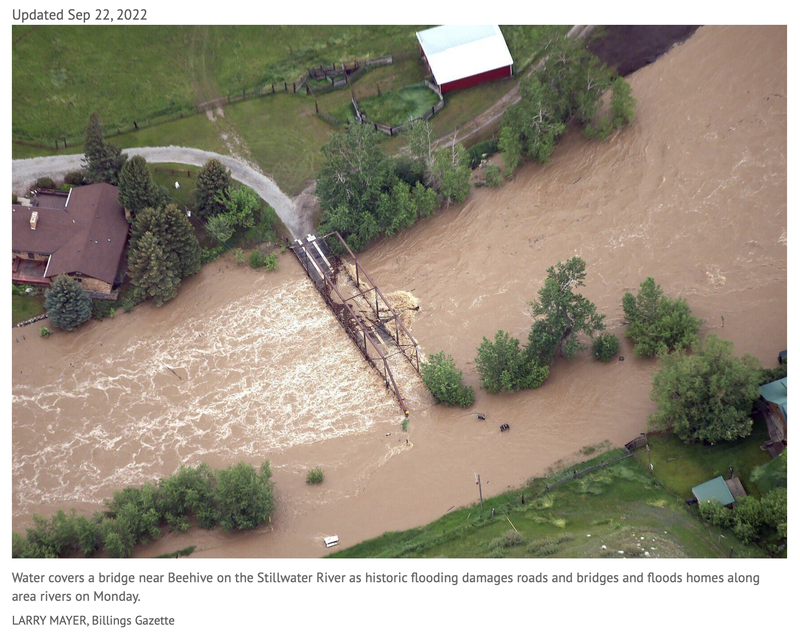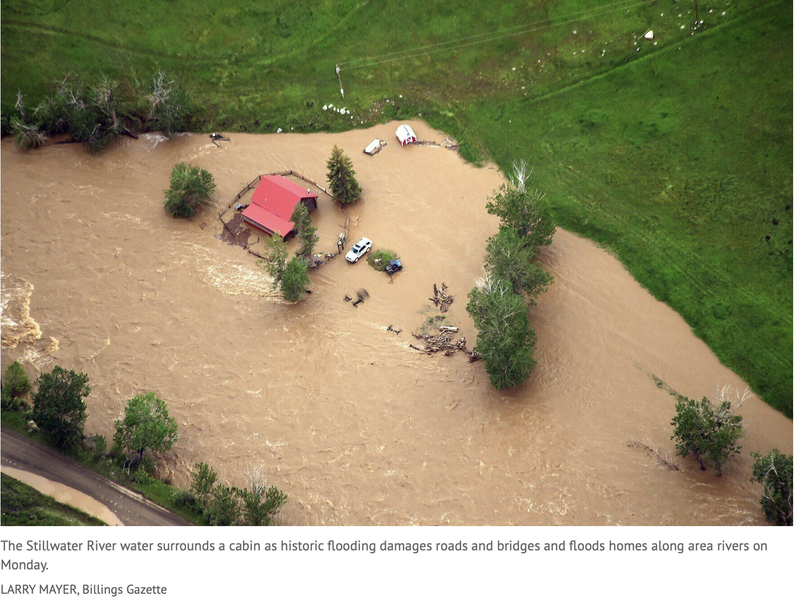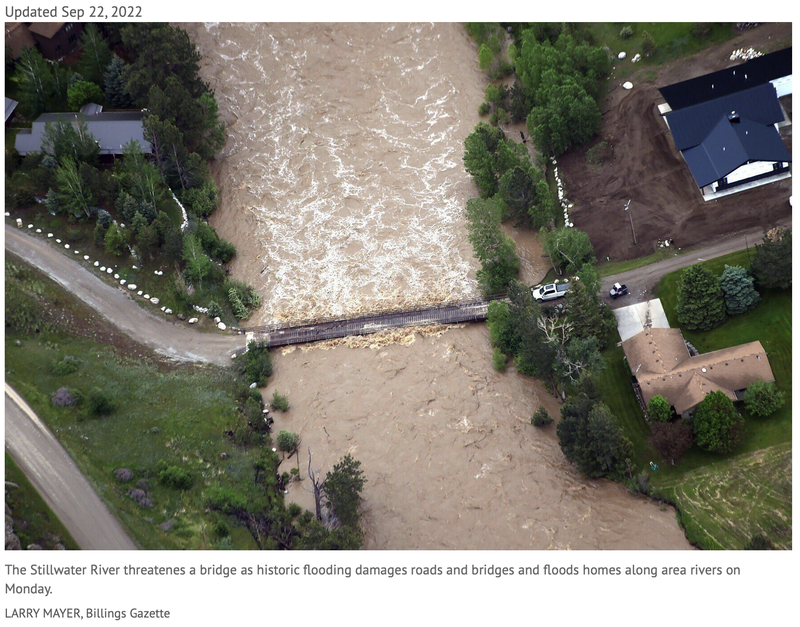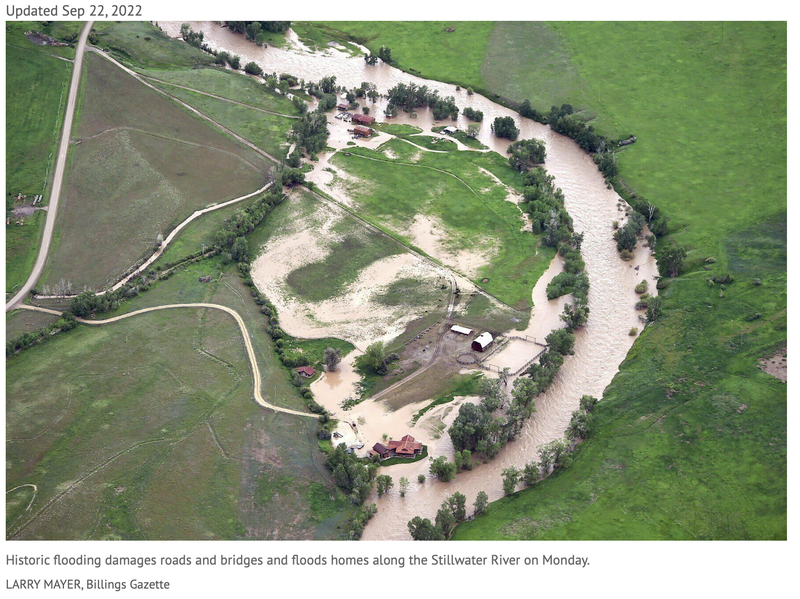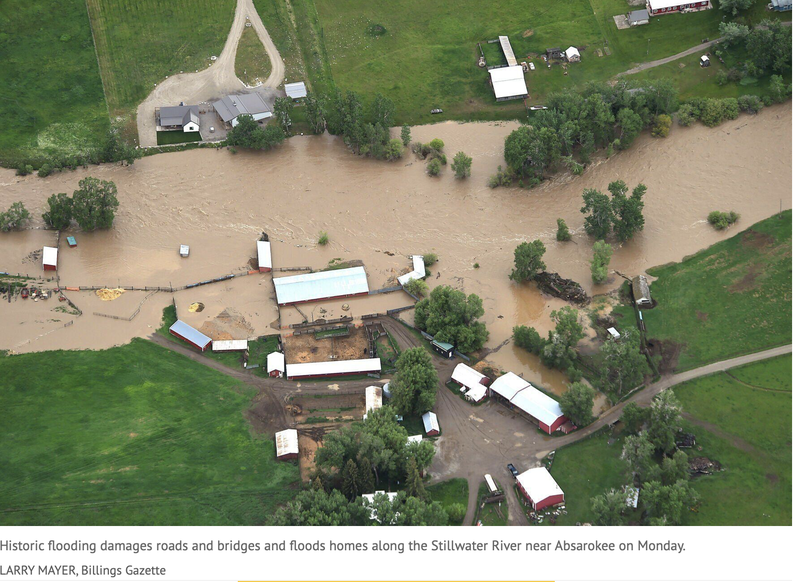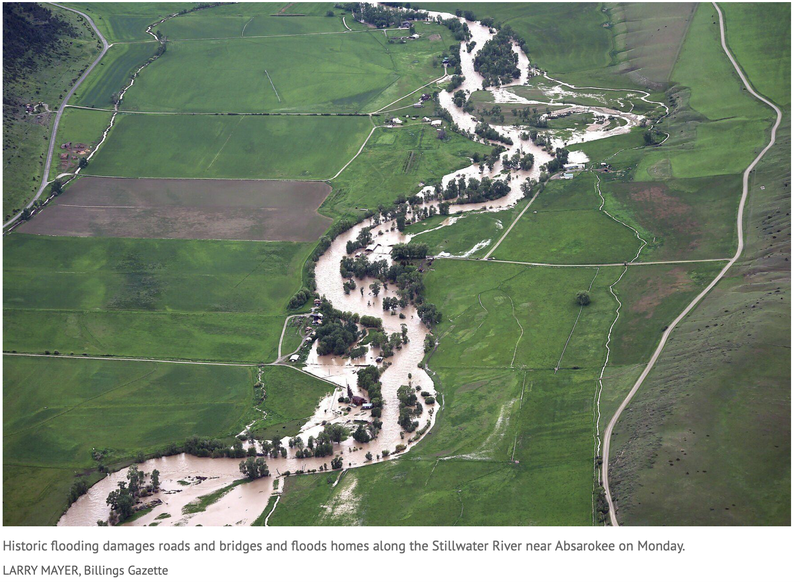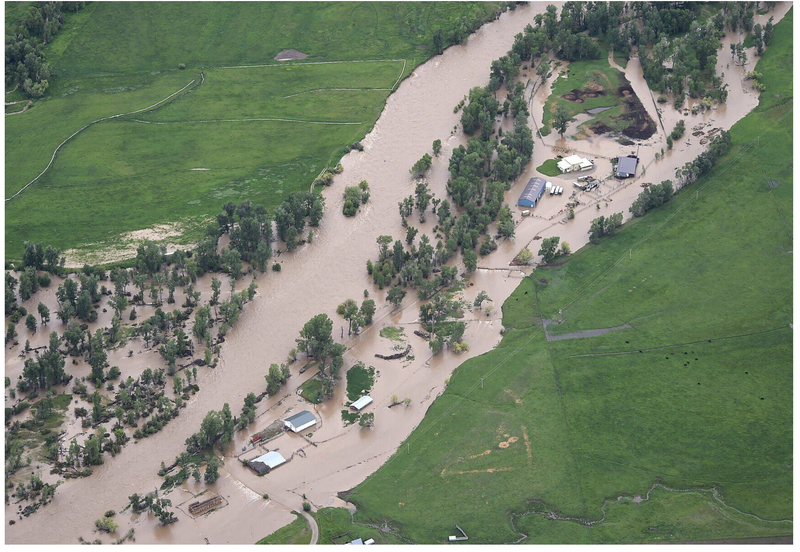SVWC River Assessment Triage Team REPORTS & DOCS
FEBRUARY 2024 UPDATE: It has been quite a productive year for the RATT Team. We came together to develop a plan to analyze the impacts of the 2022 flooding on the Stillwater and Rosebud watersheds, based on specific site visits from participating landowners. Now that the team has conducted these visits, compiled a report (found below), and shared the results last summer, we find ourselves in a period of determining next steps in a way that is most useful for landowners, the community, and indeed, the entire watershed.
LOOKING TO THE FUTURE: This past fall, we decided to consider different options regarding these next steps with input from our Team and other experts. This update provides some insight into the current considerations for next steps. SVWC strives to utilize the RATT findings in the report for the next impactful project that benefits landowners in the watershed.
As we have come to know all too well, river recovery takes time and often finding the right singular project may present challenges, especially in terms of obtaining further funding. Ideally, a next step has a clear benefit to the public good. The team should also consider current concerning trends in the local fish population in the river. Measured in Absarokee after the flood in 2022, sources at Fish, Wildlife, and Parks (MT FWP) indicated that the fish population was largely unimpacted. Measurements in 2023 show, however, historic lows. The reason for this is still not fully understood. A follow-up RATT projects must take this situation into account.
The RATT and SVWC will work with local public and private groups whenever possible to provide the most impact. SVWC has been informed by Stillwater Co. Department of Emergency Services (DES) about their process of applying for funds through the DNRC disaster fund and FEMA. The project is for a ‘Master Study’ for hazard mitigation of all county waterways. The RATT findings could serve as a basis and the funds that the community has already contributed to RATT work could be applied toward the in-kind matching portion of the grant to reduce the dollars that the county spends.
The results of the county’s potential Master Study could be used as justification and background in public and private projects that may be done along the river in the future, hopefully decreasing the need to obtain redundant evaluations done for permitting. Between now and 2026 there may be much work done on remapping floodplains. Although that is a separate process than RATT, we feel that the next phase of RATT should be informed about planned mapping that may occur along the river so we can maximize cooperation and reduce redundant projects. We are considering applying for further grants this spring that could help to fund specific projects, for example regarding the fisheries and flood future relief on area waterways. We look forward to developing these next steps and to keeping the community as up-to-date and informed as we proceed. Thank you to all who have contributed!
LOOKING TO THE FUTURE: This past fall, we decided to consider different options regarding these next steps with input from our Team and other experts. This update provides some insight into the current considerations for next steps. SVWC strives to utilize the RATT findings in the report for the next impactful project that benefits landowners in the watershed.
As we have come to know all too well, river recovery takes time and often finding the right singular project may present challenges, especially in terms of obtaining further funding. Ideally, a next step has a clear benefit to the public good. The team should also consider current concerning trends in the local fish population in the river. Measured in Absarokee after the flood in 2022, sources at Fish, Wildlife, and Parks (MT FWP) indicated that the fish population was largely unimpacted. Measurements in 2023 show, however, historic lows. The reason for this is still not fully understood. A follow-up RATT projects must take this situation into account.
The RATT and SVWC will work with local public and private groups whenever possible to provide the most impact. SVWC has been informed by Stillwater Co. Department of Emergency Services (DES) about their process of applying for funds through the DNRC disaster fund and FEMA. The project is for a ‘Master Study’ for hazard mitigation of all county waterways. The RATT findings could serve as a basis and the funds that the community has already contributed to RATT work could be applied toward the in-kind matching portion of the grant to reduce the dollars that the county spends.
The results of the county’s potential Master Study could be used as justification and background in public and private projects that may be done along the river in the future, hopefully decreasing the need to obtain redundant evaluations done for permitting. Between now and 2026 there may be much work done on remapping floodplains. Although that is a separate process than RATT, we feel that the next phase of RATT should be informed about planned mapping that may occur along the river so we can maximize cooperation and reduce redundant projects. We are considering applying for further grants this spring that could help to fund specific projects, for example regarding the fisheries and flood future relief on area waterways. We look forward to developing these next steps and to keeping the community as up-to-date and informed as we proceed. Thank you to all who have contributed!
|
EXECUTIVE SUMMARY (short version)
|
FULL REPORT (long version)
|
|
Your browser does not support viewing this document. Click here to download the document.
SUPPLEMENT SHEET
Your browser does not support viewing this document. Click here to download the document.
|
Your browser does not support viewing this document. Click here to download the document.
FUNDING OPPORTUNITIES
Your browser does not support viewing this document. Click here to download the document.
|
COMMUNITY PRESENTATION BY KARIN BOYD, TOM OSBORNE AND BRYAN GIORDONO
Your browser does not support viewing this document. Click here to download the document.
Spring 2023 Update on the River Assessment Triage Team (RATT) By Tommy Flanagan
Early spring has arrived. Until recently, you might not have thought that by looking outside. That is often how spring is in Montana. In fact, March was a difficult month to get anything done, especially for getting a good look at the ground and the river. Despite the challenging conditions, our RATT team managed to do initial site visits along the Stillwater and East Rosebud Rivers. Initiated by the Stillwater Valley Watershed Council (SVWC) in the fall, this team was formed to assess local rivers as a whole, focusing on prioritizing and identifying projects and issues for landowners most impacted by the June 2022 flooding. Although the team will draw conclusions and publish best practices and recommendations based on specific site visits that could benefit landowners, the team is mostly responsible for getting a big-picture look at the situation to work toward a coordinated response.
In March, the team took field notes at 30 sites up the Stillwater, East Rosebud and Rosebud, compared what they saw on the ground to the pre- and post-flood imagery, and considered potential treatments (or not) for certain issues. This project is more ‘global’ in nature. The team is assessing and considering what they are seeing as general trends, typical issues, and reoccurring impacts to be able to make best practice recommendations using sites as examples.
Publishing these recommendations is the next step in this project. Currently, our team is synthesizing their observations into a report. The team will meet and discuss what they saw, decide if revisiting any of these sites or supplemental sites is necessary, and do any specific landowner outreach if they need more information. We are planning for another team virtual meeting to discuss this in April. SVWC will make these reports publicly available, especially to the landowners who took part. The report will be modelled after a similar report that was published after flooding along the Musselshell River in 2011. That report can be found on the website of the Musselshell Watershed Coalition.
The team is still compiling their observations, however, we’d like to share a few preliminary ‘general takeaways’ from our site visits so far. These are not yet ‘results,’ but more food for thought:
1) Some people rightly feel their property could be at great risk right now. If that is the case, they should be vigilant and prepared for emergency actions, but be careful not to overreact to the current situation. The river will continue to adjust for many years, which could cause issues later.
2) Landowners should give serious consideration to the need for action. This can range from taking no immediate action (which in some cases is the best, most sensible, and cost-effective option) to some type of serious intervention. It is also important to keep in mind that blanket riprap may be an option in some cases but is not the only option in all cases. In some cases, landowners might have a bank/erosion issue that can be solved by other forms of bank stabilization methods. In other cases, landowners might be faced with a water volume issue, in which case riprap may cause channel restriction. This could worsen the impacts of the water volume issue. This type of consideration should be made by landowners on their sites.
3) Less aggressive treatments might offer the most cost-effective solution to the current issue, especially given that the river will continue adjusting over the next several years. It comes down to a cost- effectiveness question, weighing the value of the land, risk that is posed, and cost of the treatment. We have been reminded several times of the case along the Musselshell starting in 2011 (and other watersheds that have experienced this type of event). After that disaster, landowners that were able to wait longer to see how the river would change in the following years (which it did) were often the ones that fared better in the long run.
With that in mind, the RATT team plans to host a community educational event to talk more about the project, observations, and general recommendations. This will take place in late spring. Additionally, we (re)learned through this process how important the human element is to the story of this flood. Many of the landowners whose sites we visited had stories to tell of the flood. The RATT team wants to collect those stories as well. If you or a neighbor has a story you would like to share, please get a hold of the SVWC. We would love to record parts of these, collect them for the future, and include a few in the final RATT report.
We are proud of what this team has been able to do so far and will update as we proceed. We are so grateful to every organization and group that has contributed to the formation of the RATT team. It has truly been a community effort and we look forward to more to come.
Early spring has arrived. Until recently, you might not have thought that by looking outside. That is often how spring is in Montana. In fact, March was a difficult month to get anything done, especially for getting a good look at the ground and the river. Despite the challenging conditions, our RATT team managed to do initial site visits along the Stillwater and East Rosebud Rivers. Initiated by the Stillwater Valley Watershed Council (SVWC) in the fall, this team was formed to assess local rivers as a whole, focusing on prioritizing and identifying projects and issues for landowners most impacted by the June 2022 flooding. Although the team will draw conclusions and publish best practices and recommendations based on specific site visits that could benefit landowners, the team is mostly responsible for getting a big-picture look at the situation to work toward a coordinated response.
In March, the team took field notes at 30 sites up the Stillwater, East Rosebud and Rosebud, compared what they saw on the ground to the pre- and post-flood imagery, and considered potential treatments (or not) for certain issues. This project is more ‘global’ in nature. The team is assessing and considering what they are seeing as general trends, typical issues, and reoccurring impacts to be able to make best practice recommendations using sites as examples.
Publishing these recommendations is the next step in this project. Currently, our team is synthesizing their observations into a report. The team will meet and discuss what they saw, decide if revisiting any of these sites or supplemental sites is necessary, and do any specific landowner outreach if they need more information. We are planning for another team virtual meeting to discuss this in April. SVWC will make these reports publicly available, especially to the landowners who took part. The report will be modelled after a similar report that was published after flooding along the Musselshell River in 2011. That report can be found on the website of the Musselshell Watershed Coalition.
The team is still compiling their observations, however, we’d like to share a few preliminary ‘general takeaways’ from our site visits so far. These are not yet ‘results,’ but more food for thought:
1) Some people rightly feel their property could be at great risk right now. If that is the case, they should be vigilant and prepared for emergency actions, but be careful not to overreact to the current situation. The river will continue to adjust for many years, which could cause issues later.
2) Landowners should give serious consideration to the need for action. This can range from taking no immediate action (which in some cases is the best, most sensible, and cost-effective option) to some type of serious intervention. It is also important to keep in mind that blanket riprap may be an option in some cases but is not the only option in all cases. In some cases, landowners might have a bank/erosion issue that can be solved by other forms of bank stabilization methods. In other cases, landowners might be faced with a water volume issue, in which case riprap may cause channel restriction. This could worsen the impacts of the water volume issue. This type of consideration should be made by landowners on their sites.
3) Less aggressive treatments might offer the most cost-effective solution to the current issue, especially given that the river will continue adjusting over the next several years. It comes down to a cost- effectiveness question, weighing the value of the land, risk that is posed, and cost of the treatment. We have been reminded several times of the case along the Musselshell starting in 2011 (and other watersheds that have experienced this type of event). After that disaster, landowners that were able to wait longer to see how the river would change in the following years (which it did) were often the ones that fared better in the long run.
With that in mind, the RATT team plans to host a community educational event to talk more about the project, observations, and general recommendations. This will take place in late spring. Additionally, we (re)learned through this process how important the human element is to the story of this flood. Many of the landowners whose sites we visited had stories to tell of the flood. The RATT team wants to collect those stories as well. If you or a neighbor has a story you would like to share, please get a hold of the SVWC. We would love to record parts of these, collect them for the future, and include a few in the final RATT report.
We are proud of what this team has been able to do so far and will update as we proceed. We are so grateful to every organization and group that has contributed to the formation of the RATT team. It has truly been a community effort and we look forward to more to come.
DECEMBER, 2022
Written by Tommy Flanagan for SVWC
Written by Tommy Flanagan for SVWC
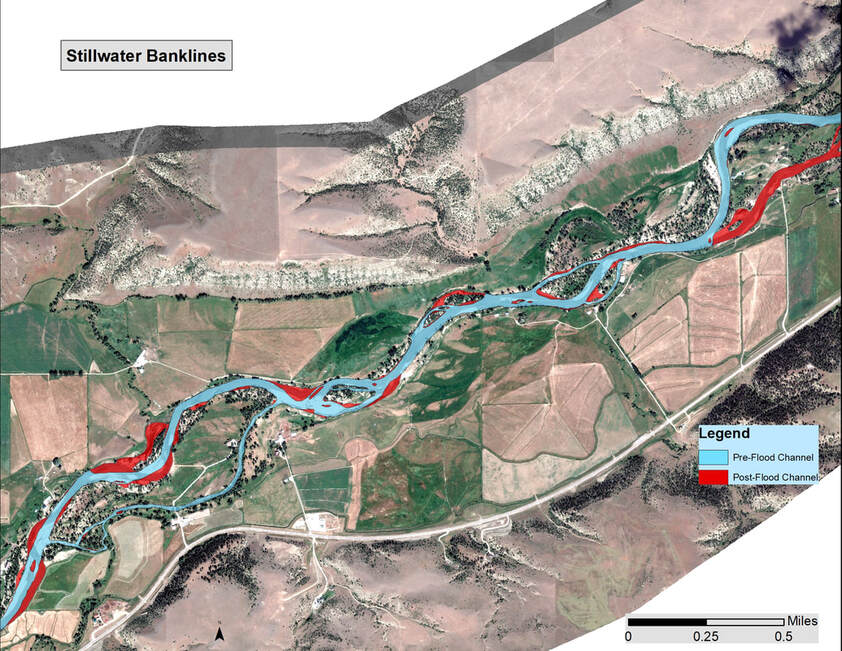 Aerial image of pre-flood (blue) and post-flood (red) bank lines south of Absarokee. Images like this will be available to interested landowners. Please contact us for more information.
Aerial image of pre-flood (blue) and post-flood (red) bank lines south of Absarokee. Images like this will be available to interested landowners. Please contact us for more information.
The natural disaster we experienced along our rivers in south central Montana this past summer needs no recap. It was shocking. Right outside our front doors, up and down our local valleys, we witnessed a geological event not seen in our area in living memory. As a community, we learned a lot. We learned about the importance of community disaster preparedness, the worth of reliable and accessible information, the value in having good and helpful neighbors, and re-learned just how powerful Mother Nature can be. Although the initial shock may be behind us, much of the work lies ahead.
Disasters bring with them many phases of response. The initial response was characterized by volunteers, donations, good Samaritans, and our local and state agencies assessing the damage. The medium-term response has been about impacted property owners along with county and state officials determining what options they have available to them and analyzing what work can be done, when it can be done, what permits are needed to do so, and what the price will be. We are certainly not out of the woods yet, but the Stillwater Valley Watershed Council (SVWC), thanks to the extremely generous support of community partners, is now able to focus on the next stages of recovery. We are pleased to introduce our new community post-flood River Assessment and Triage Team (or RATT for short).
Background The flooding of the Stillwater and East and West Rosebud Rivers was on a scale never seen before. Along with many other community organizations in the county, SVWC was left asking itself what could be done.
In the weeks following the disaster, the Musselshell Watershed Coalition (MWC) held an open meeting at the extension office in Roundup. The goal of the meeting was to discuss lessons learned from the hardships they have experienced in their watershed. In 2011, the Musselshell was hit with flooding, which, unlike the flooding experienced this summer in Stillwater County, saw sustained historic high water that lasted for weeks. This dramatically changed the river and watershed and shook homeowners and landowners along its banks to the core. It also spurred a decade of hundred-year events, one after the other, including additional flooding from rain and ice jams in subsequent years. The MWC wanted to share their experiences with neighboring communities going through a similar journey.
Members of the SVWC were in attendance that day and heard two lessons loud and clear: 1) Recovery takes time. Patience is required. On the Musselshell, it has been a process of no less than a decade, as conditions change every year. 2) Established community response structures and networks are needed to streamline assessment and response from day one. Enter: the RATT team.
SVWC immediately got active and called together two meetings of community organizations and foundations to talk about both points. In August and October, representatives from a range of groups in Stillwater County got together and talked about emergency preparedness and how to plan for the future. These conversations are ongoing.
The RATT During these two community meetings, we introduced the idea of forming a RATT team. We asked community organizations, many of which had already started raising funds for flood recovery efforts, if they had the capacity to contribute to funding the team. Again, we learned what a generous community we have.. So far we have received the following contributions from the: Absarokee Civic Club, Columbus Community Foundation, Nye Community Foundation, Stillwater Protective Association, Stillwater Conservation District, as well as the Absarokee Community Foundation (from a grant through Montana Community Foundation’s Montana Disaster Recovery Fund). Additionally, SVWC will be providing the seed money to get the RATT team off the ground and into the water, matching funds for future grant applications will be used to finance the team, coordination of the team and future match funds for landowner remediation projects. With the community support we have received so far, we are off to a fantastic start.
The team will be modeled after the concept that was used as a response to the disaster along the Musselshell. The team includes a geomorphologist (Karin Boyd), hydrologist (Tom Osborne), fisheries biologist, local Conservation District, and representatives from the SVWC. The team will assess local rivers (Stillwater, East Rosebud, West Rosebud, and Rosebud) as a whole, focusing on priority reaches and landowners, landscape and natural resources most impacted by the June flooding. Although the team will draw conclusions and publish best practices and recommendations based on specific site visits that could benefit landowners, the team is mostly responsible for getting a big-picture look at the situation to work toward a coordinated response.
One of the first such steps is to obtain pre-disaster aerial photography (example above) of the entire stretch of the effected river as well as quality post-disaster footage for comparison.
Specifically, the RATT team has been tasked with the following objectives:
1) Evaluate the impacts of the June 2022 flooding on the Stillwater, Rosebud, West Rosebud, and East Rosebud rivers to document character of the event and its ramifications.
2) Document impacts, described in terms of primary geomorphic processes at work, and conceptual alternatives providing flooding mitigation strategies that are cost-effective and support the long-term health of the river systems and landowners involved.
3) Present permitting requirements with a summary of potential funding opportunities.
4) Ease the financial burden of landowners, providing technical guidance site summary reports as well as best practice recommendations for river cleanup and stream bank restoration efforts.
Getting Started With the generous support of community organizations and engaged citizens, we are thrilled to be launching the RATT team. The team is preparing to conduct site visits to begin assessments and will be in touch with landowners in the near future regarding this task, working closely with the Conservation District. To help get this process started, we are asking effected landowners to fill out the landowner survey. Surveys are available at various businesses in Fishtail and Absarokee, as well on SVWC's website.
Forms can be mailed back to: SVWC, PO Box 112, Absarokee, MT, 59001.
We are thankful to the community partners who have contributed financially to this venture.We are convinced that the work of the team will steer our community in the direction of long-term recovery as well as make the watershed, its residents, and communities more resilient to the next natural disaster.
Updates on the work of the RATT team will be made available to the community. For more information, to receive a survey, or questions about the RATT team, please contact Lindsey Clark or Tommy Flanagan at [email protected].
Disasters bring with them many phases of response. The initial response was characterized by volunteers, donations, good Samaritans, and our local and state agencies assessing the damage. The medium-term response has been about impacted property owners along with county and state officials determining what options they have available to them and analyzing what work can be done, when it can be done, what permits are needed to do so, and what the price will be. We are certainly not out of the woods yet, but the Stillwater Valley Watershed Council (SVWC), thanks to the extremely generous support of community partners, is now able to focus on the next stages of recovery. We are pleased to introduce our new community post-flood River Assessment and Triage Team (or RATT for short).
Background The flooding of the Stillwater and East and West Rosebud Rivers was on a scale never seen before. Along with many other community organizations in the county, SVWC was left asking itself what could be done.
In the weeks following the disaster, the Musselshell Watershed Coalition (MWC) held an open meeting at the extension office in Roundup. The goal of the meeting was to discuss lessons learned from the hardships they have experienced in their watershed. In 2011, the Musselshell was hit with flooding, which, unlike the flooding experienced this summer in Stillwater County, saw sustained historic high water that lasted for weeks. This dramatically changed the river and watershed and shook homeowners and landowners along its banks to the core. It also spurred a decade of hundred-year events, one after the other, including additional flooding from rain and ice jams in subsequent years. The MWC wanted to share their experiences with neighboring communities going through a similar journey.
Members of the SVWC were in attendance that day and heard two lessons loud and clear: 1) Recovery takes time. Patience is required. On the Musselshell, it has been a process of no less than a decade, as conditions change every year. 2) Established community response structures and networks are needed to streamline assessment and response from day one. Enter: the RATT team.
SVWC immediately got active and called together two meetings of community organizations and foundations to talk about both points. In August and October, representatives from a range of groups in Stillwater County got together and talked about emergency preparedness and how to plan for the future. These conversations are ongoing.
The RATT During these two community meetings, we introduced the idea of forming a RATT team. We asked community organizations, many of which had already started raising funds for flood recovery efforts, if they had the capacity to contribute to funding the team. Again, we learned what a generous community we have.. So far we have received the following contributions from the: Absarokee Civic Club, Columbus Community Foundation, Nye Community Foundation, Stillwater Protective Association, Stillwater Conservation District, as well as the Absarokee Community Foundation (from a grant through Montana Community Foundation’s Montana Disaster Recovery Fund). Additionally, SVWC will be providing the seed money to get the RATT team off the ground and into the water, matching funds for future grant applications will be used to finance the team, coordination of the team and future match funds for landowner remediation projects. With the community support we have received so far, we are off to a fantastic start.
The team will be modeled after the concept that was used as a response to the disaster along the Musselshell. The team includes a geomorphologist (Karin Boyd), hydrologist (Tom Osborne), fisheries biologist, local Conservation District, and representatives from the SVWC. The team will assess local rivers (Stillwater, East Rosebud, West Rosebud, and Rosebud) as a whole, focusing on priority reaches and landowners, landscape and natural resources most impacted by the June flooding. Although the team will draw conclusions and publish best practices and recommendations based on specific site visits that could benefit landowners, the team is mostly responsible for getting a big-picture look at the situation to work toward a coordinated response.
One of the first such steps is to obtain pre-disaster aerial photography (example above) of the entire stretch of the effected river as well as quality post-disaster footage for comparison.
Specifically, the RATT team has been tasked with the following objectives:
1) Evaluate the impacts of the June 2022 flooding on the Stillwater, Rosebud, West Rosebud, and East Rosebud rivers to document character of the event and its ramifications.
2) Document impacts, described in terms of primary geomorphic processes at work, and conceptual alternatives providing flooding mitigation strategies that are cost-effective and support the long-term health of the river systems and landowners involved.
3) Present permitting requirements with a summary of potential funding opportunities.
4) Ease the financial burden of landowners, providing technical guidance site summary reports as well as best practice recommendations for river cleanup and stream bank restoration efforts.
Getting Started With the generous support of community organizations and engaged citizens, we are thrilled to be launching the RATT team. The team is preparing to conduct site visits to begin assessments and will be in touch with landowners in the near future regarding this task, working closely with the Conservation District. To help get this process started, we are asking effected landowners to fill out the landowner survey. Surveys are available at various businesses in Fishtail and Absarokee, as well on SVWC's website.
Forms can be mailed back to: SVWC, PO Box 112, Absarokee, MT, 59001.
We are thankful to the community partners who have contributed financially to this venture.We are convinced that the work of the team will steer our community in the direction of long-term recovery as well as make the watershed, its residents, and communities more resilient to the next natural disaster.
Updates on the work of the RATT team will be made available to the community. For more information, to receive a survey, or questions about the RATT team, please contact Lindsey Clark or Tommy Flanagan at [email protected].
Photos Courtesy of Larry Mayer, Billings Gazette

